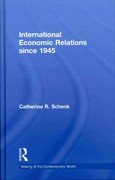Subject: Statistics
Question 1: The level of signicance indicates the probability of rejecting a true null hypothesis. True or False Question 2: You can make a Type I error when the null hypothesis is correct. True or False Question 3: The power of a statistical test is the probability of rejecting a false null hypothesis. True or False guessing true Question 4: In a hypothesis test about Mean, increasing the level of signicance from 0.05 to 0.10 will raise the chance of a Type II error; other relevant factors being held constant. True or False Question 5: In a hypothesis test about Mean, switching the significance level from .05 to .10 will make type I error more likely; other relevant factors being held constant. True or False Question 6: The larger is the gap between the hypothesized mean and the actual Mean, the stronger is "the power of the test." True or False Question 7: You cannot make a Type II error when the null hypothesis is correct. True or False Question 8: A tire manufacturer has to nd the average tensile strength of rubber in a particular tire brand. Assuming normality and a known population standard deviation, the manager uses a Z test to check that the mean tensile strength is 850 pounds per square inch. The calculated Z-value is a positive value that yields a p-value of 0.015. If the specified alpha is 0.01 is used, we reject the Null hypothesis. True or False Question 9: The greater the p-value, the more we doubt the null hypothesis. True or False Question 10: The average for a professional basketball player, who is retiring. is 21 points per game. There are several potential replacements. The owner believes that signing a replacement is onlyjustified if one scores an average more than 22 points per game. We can represent this Hypothesis Test problem as: aA. H0: p 521 vs. H1: [1 > 21 b HO: J S 22 vs. H1: H > 22 c HO: H 2 21 vs. H1: [ 10 with a critical value approach. The Null hypothesis will be rejected at significance level a if the absolute value of calculated test statistic is: a Less than Za/2 b Less than Za c Greater than Za/2 d Greater than Za e Less than the p-value Question 12: If we do not reject a null hypothesis at the 0.05 significance level, we will _ reject at the 0.10 level. a always b sometimes c never d Cannot say without knowing one-tailed or two-tailed. Question 13: We are testing whether the average time employees stay with a company is less than three years, given that a randomly selected sample of 64 employees has a mean of 2.76 years and a standard deviation of 0.8 years. We assume a normal distribution. Our conclusion will be: a Reject the Null at 5% significance level but not at 1% level. b Reject the Null at 10% significance level but not at 5% level. c Reject the Null even at 1% significance level d Cannot reject the Null even at 10% significance level e Reject the Null at 5% significance level but not at 10% level Question 14: In a large sample test as HO: J =10 vs. Ha: u #10, using a p-value approach, we reject HO at the level of significance a when the p-value is: a greater than a/2 b greater than a c less than a d less than a/2 e Less than Za Question 15:If the sample size is less than 30 in a hypothesis test about population Mean with unknown population standard deviation, one compares the computed test statistic for significance with a value from the _ distribution. a. t b. 2 c. Binomial d. Hypergeometric e. Left-skewed Question 16: In an early study, researchers at a private University found that 33% of the freshmen had received at least one A in their rst semester. University administrators have received report that grade ination may have caused this percentage to increase recently. A random sample of 500 freshmen found that 180 had at least one A in their rst semester. Calculate the appropriate test statistic and test the hypotheses related to the concern and test at 5% and 1%. show how to solve in excel (screenshots)









